
|
|
|
|
 |
|
Home Site Search Contact Us Subscribe
|
|
|
|
In His Own Words: Luxembourg's New Concert Hall by Christian de Portzamparc
A new home for the Orchestre Philharmonique du Luxembourg is one of a number of cultural projects underway as the city prepares itself for its second stint as European Capital of Culture. by ArchNewsNow.com November 11, 2004 In 1995, the city of Luxembourg was named European Capital of Culture.
It will again wear that mantle in 2007. The Luxembourg government and private
industry have taken the title very seriously with a €450 million investment in
the cultural infrastructure that has projected the small country (population
448,300) onto the international cultural stage. There are no fewer than 10 projects either recently completed or
underway. Among the most anticipated are the Grand Duke Jean
Museum of Modern Art, designed by I.M. Pei, due to open in 2006, and the nearby
Salle de Concerts
Grande-Duchesse Joséphine-Charlotte, designed by Christian de Portzamparc,
scheduled to open in 2005. The concert hall, new home of the
Orchestre Philharmonique du Luxembourg, is sited at the heart of the triangular
Place de l’Europe, as part of a new master plan designed by Ricardo
Bofill in 1996. In 1997, Portzamparc won an international competition to design
the estimated €107.7 million, 20,000-square-meter (@ 215,000sf) hall, which includes: the
main auditorium that can expand from 1,226 to 1,506 seats; a 302-seat chamber
music hall; and a specialized, 120-seat hall for electro-acoustic music. In his own words: Christian de Portzamparc’s vision of Luxembourg’s new Concert Hall In Luxembourg, on the Kirchberg Plateau, at the center of the
Place de l’Europe, the Concert Hall now stands as a rotunda, like a baptistery.
It is an autonomous object in the middle of this vast triangle, like a jewel
set in a case formed by the surrounding buildings. A foyer-gallery encircles
the central kernel of the hall. The facade of this peripheral foyer is a vast
filigree of 823 fine columns mathematically organized in curves. Neither opaque
nor transparent, the rhythms affirm the outer shape of the hall and offer a
wealth of varying views deep into the building, depending on where you stand. Seen from inside, the play of light is very particular. The
observer discovers a continuous dialogue of transparencies. In fact, at the
beginning when I visited the site, I thought I might install a forest ring
between the interior and the exterior – a symbol of the separation of two
different worlds. That of music offers a strong sensory experience, marked by a
frontier in the form of an improbable curtain of light. In the inner part of
the foyer-gallery, a series of sculptural towers mark the entrances of the
hall. A long thin footbridge, winding around the central cluster of towers,
allows circulation within the site’s upper levels and gives access to the boxes
of the main auditorium. Inside the concert hall, the virtues of a Shakespearean theatre
are combined with the proven acoustics of “shoe-box” concert halls. The
freestanding towers with their boxes give an impression of depth that seems to
“dilate” the space. The impression is no longer that of a closed hall but of a
gathering place amongst tall structures, thronged with people. In order to give autonomy to each tower, they are set at differing
angles, which might seem haphazard, but in fact assures that each listener has
good views of the stage and orchestra. Each tower has four floors of boxes with
every listener in a front row seat. I wanted the public to populate the walls
of the space, surrounding the music. The volume of the chamber-music hall is very considered: it seems
to be sheltered under a coiled leaf or to be part of a cone growing out of the
cluster of columns and softly unfolding. The inside of the hall is defined by
two reflecting elements, disposed so as to avoid an over concentration of
sound, one being concave and the other convex. Another reflector above the
orchestra zone completes this acoustic device. The unusual curving axis of the hall, seeking to unite the
orchestra and its public, is clearly marked and maintains the integration
between the two. n Christian de Portzamparc Construction Authority: Ministry
of Public Works, Grand
Duchy of Luxembourg (link to an overview (PDF) of
cultural projects) Concert Hall Management: Public
Establishment “Salle de Concerts Grande-Duchesse Joséphine-Charlotte” Design Architect: Christian de
Portzamparc Associate Architect: Christian
Bauer & Associés Interior Acoustician: XU
Acoustique Exterior/Environmental
Acoustician: AVEL Acoustique Stage Design: Changement à Vue, Michel Fayet Consultants: Reinforced concrete/metal
structure: Gehl Jacoby et Associés Glass façade/Metal columns: Gehl
Jacoby et Associés; Setec Tpi HVAC/sanitary planning: S&E
Consult; Setec équipements Electrical: Felgen &
Associés Technical: Secolux Set design: Veritas Aerodynamics: DMI – Force
Technology Health & Safety: Sageri Paris-based Christian de Portzamparc’s first major work was a water tower in Marne-la-Vallée (1971-1979); to date, he is the only
Frenchman to receive the Pritzker Prize (1994), and this year he was awarded the 2004 Grand Prix de l’Urbanisme. His first major work was a water tower in Marne-la-Vallée (1971-1979),
and he made an international name for himself in 1984, when he won the
competition to design the Cité de la Musique at La Villette (Paris),
completed in 1995. Recent projects include: apartment block
Nexus World in Fukuoka, Japan; Palais des Congrès extension, Paris; LVMH
Tower, New York; and the Law Courts, Grasse en Provence. Current works in
progress: the headquarters of publishing group Le Monde, Paris
(late 2004); Museum and Library, Rennes, France (1993-2005); Block One in Rem
Koolhaas master plan for Almere, The Netherlands (2006); Société Générale tower, La Défense,
Paris; and Cidade da Musica, Rio de Janeiro (2003-2007). Portzamparc is also at
work on a residential tower in New York and the master plan of Beijing Port
Area. |
(click on pictures to enlarge)  (Atelier Christian de Portzamparc) Salle de Concerts Grande-Duchesse Joséphine-Charlotte elevation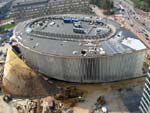 (Fonds d'Urbanisation et d'Aménagement du Plateau de Kirchberg) Site under construction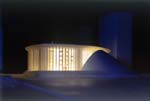 (Atelier Christian de Portzamparc) Model: nighttime exterior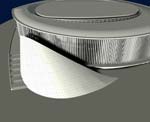 (Atelier Christian de Portzamparc) Exterior view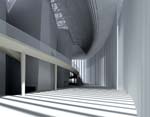 (Atelier Christian de Portzamparc) Foyer-gallery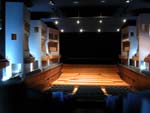 (Atelier Christian de Portzamparc) Main auditorium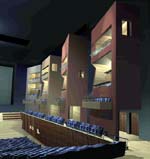 (Atelier Christian de Portzamparc) Detail of "tower" boxes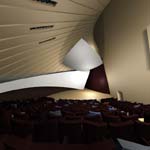 (Atelier Christian de Portzamparc) Chamber Music Hall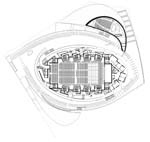 (Atelier Christian de Portzamparc) Floorplan |
© 2004 ArchNewsNow.com